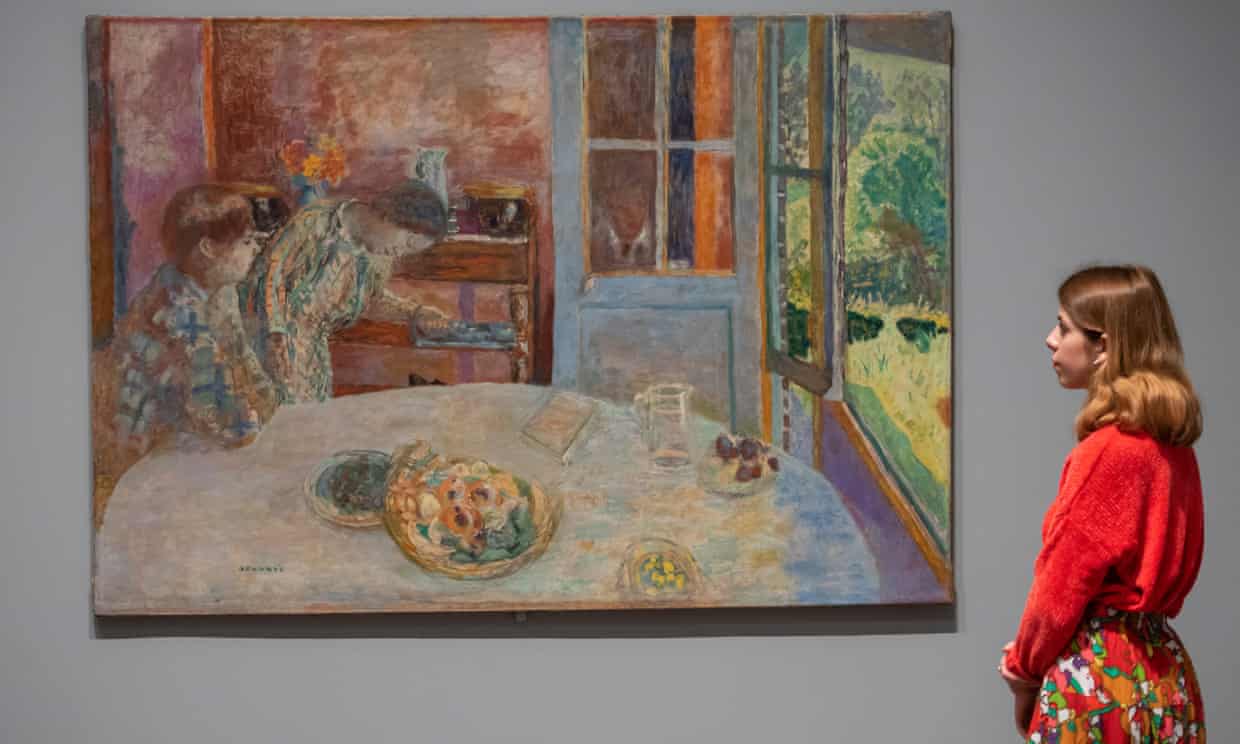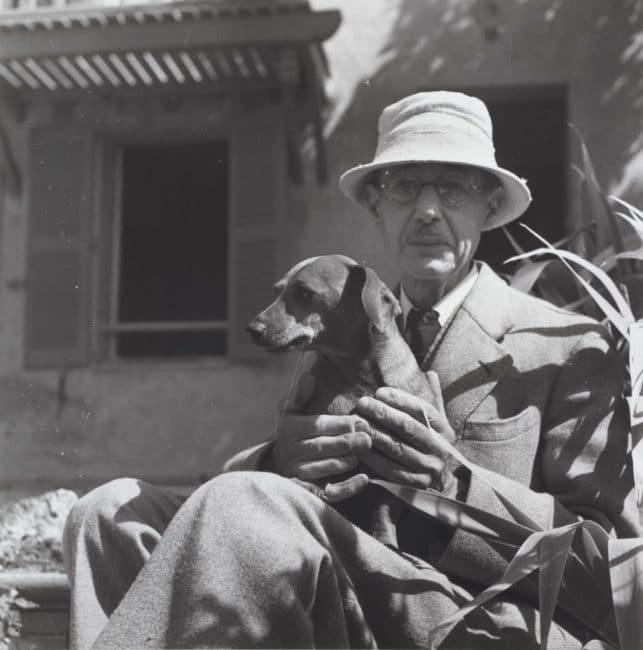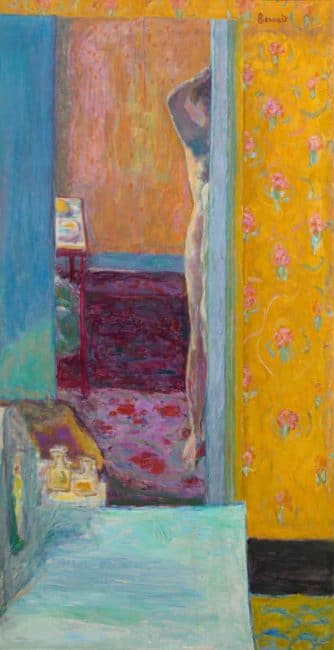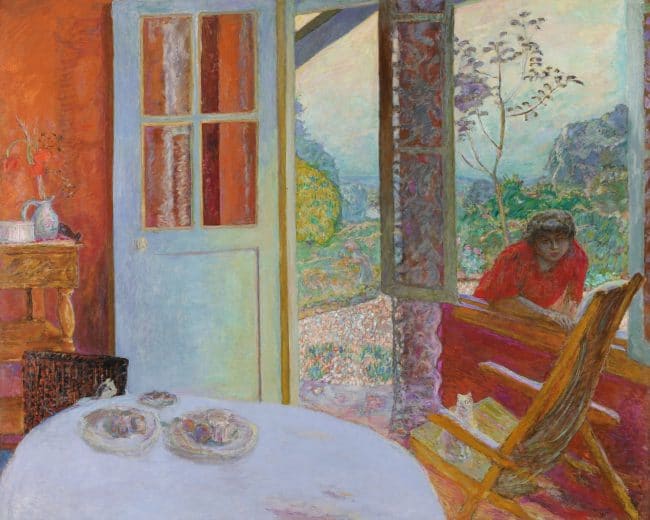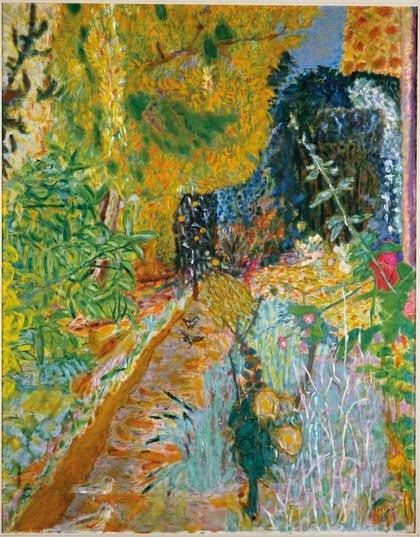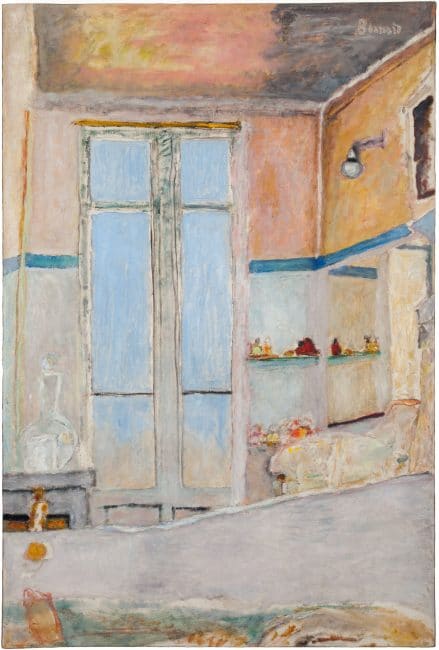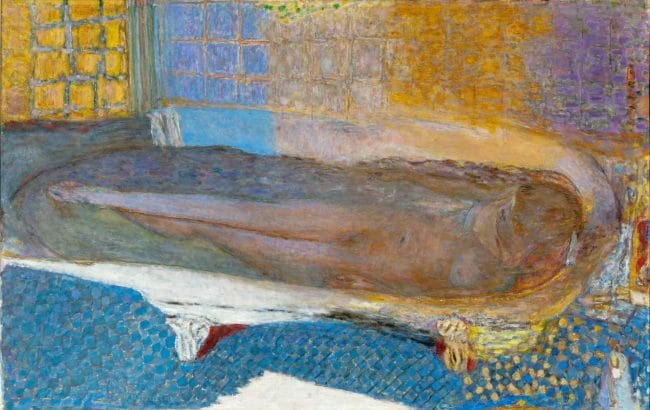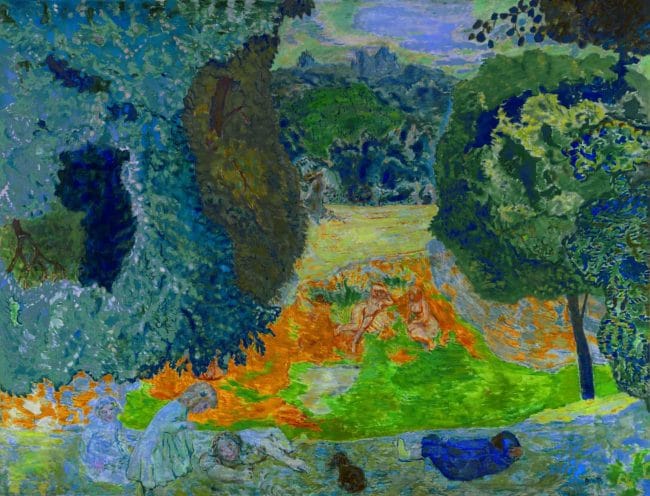For the first time in twenty or so years the Tate gives us a major Bonnard exhibition, Pierre Bonnard Tate Modern: The Colour of Memory. The exhibition spans four decades from 1912 to his death in 1947, and gives us a chance to take a closer look at a painter who seems to split critical opinion. Despite often being regarded as an also-ran of the period there were many, particularly in the early 20th century, who regarded him as one of the masters.
Perhaps the lack of critical consensus lies in his position within the development of late 19th century art. Bonnard sits on the cusp of the movement from representation to abstraction, and is actually also an important figure in the movement that brought about this monumental change.
Inspired by the Symbolists Bonnard belonged to a group called the Nabis (‘Prophets’), a ‘desperately earnest’, intellectual group who were all largely contemporaries at the elite Academie Julian. They were inspired by Serusier and a modestly sized semi-abstract painting of his that they called the ‘Talisman’, itself prompted by Paul Gaugin.
Rejecting the ‘plein air’ approach of the Impressionists, they took more from the Symbolists whose goal was to make the imaginary real. Bonnard was inspired by scenes from everyday life which he memorised or photographed before painting from memory.
In some ways this methodology makes Bonnard appear like an amateur. The paintings often seem muddled, brushwork curiously unconfident with irregular and inconsistent application of paint, unconvincing perspective, awkwardly painted animals and people. Take a look at the strange white cat and the awkward pose and mis-shapen face of his wife Marthe in Dining Room in the Country (above); on the face of it this seems to be a painter who struggled to put figures and form on to canvas.
Overall this work also looks rather rushed – except it wasn’t. Far from it, Bonnard often took years to finish a painting, working on several at one time and often returning to tweak and amend. A famous story even has him attempting to surreptitiously alter a painting already hanging in a French gallery. He even left relatives a posthumous note on how to further improve his very last canvas ‘Almond Tree in Blossom’.
Of course marvellous draughtsmanship was not the aim of Bonnard and the Nabis and reliance on memory, the hesitation, the indecision, the endless repainting brings a certain fuzziness to the paintings. It evokes our own memories of times long past: languid summers, peaceful days at home, the sound of birdsong and rustling leaves. These are images evoking time passing slowly in intimate personal spaces – living rooms, dining tables and bathrooms, often partly hidden and often voyeuristically framed by doors and windows.
The Tate even suggest that this is an exhibition best enjoyed by those taking their time. “His paintings really reward very close and extended scrutiny,” said Matthew Gale, the head of displays and curator of Pierre Bonnard Tate Modern: The Colour of Memory. “Something that perhaps is more of a challenge for us in this day and age but it is something that will be encouraged in this exhibition.”
So much for memory, the show title also tells you that this is also of course an exhibition of scintillating colour. Bonnard’s memorised hues were inspired by the flat colour panels of Japanese prints and from Paul Sérusier who sought to free form and colour from their traditional descriptive functions in order to express personal emotions and spiritual truths.
Everyday moments are transformed in to breathtaking visions in vivid oranges, reds, greens and blues alongside the ‘beautiful greys’ beloved of the Nabis. Ordinary interiors are elevated to dazzling inspirational ones.
A critical eye would point out a certain repetition, lack of direction, clunky figuration, and a detached point of view in an era of incredible change and upheaval. It may be relevant, but somehow it is easier to get carried away by the sheer exuberance of it all and enjoy.
For more information visit Pierre Bonnard Tate Modern: The Colour of Memory
To purchase Pierre Bonnard: Tate Modern : The Colour of Memory visit here
For our curated recommended for Art, Culture, Design and Architecture books visit the CELLOPHANELAND* bookstore




